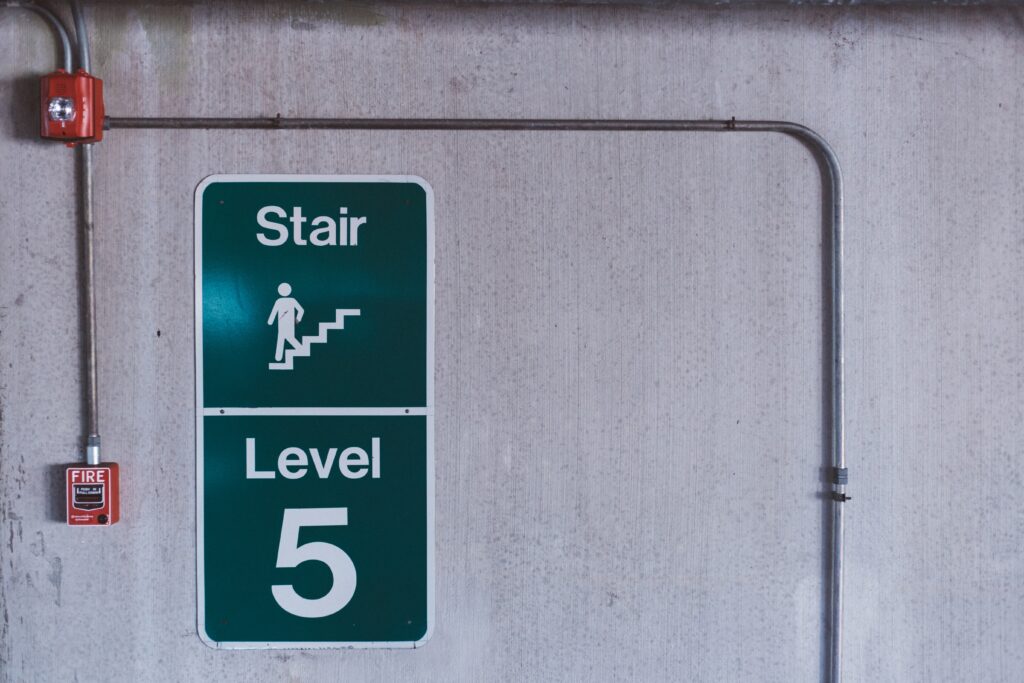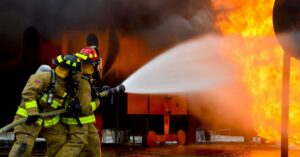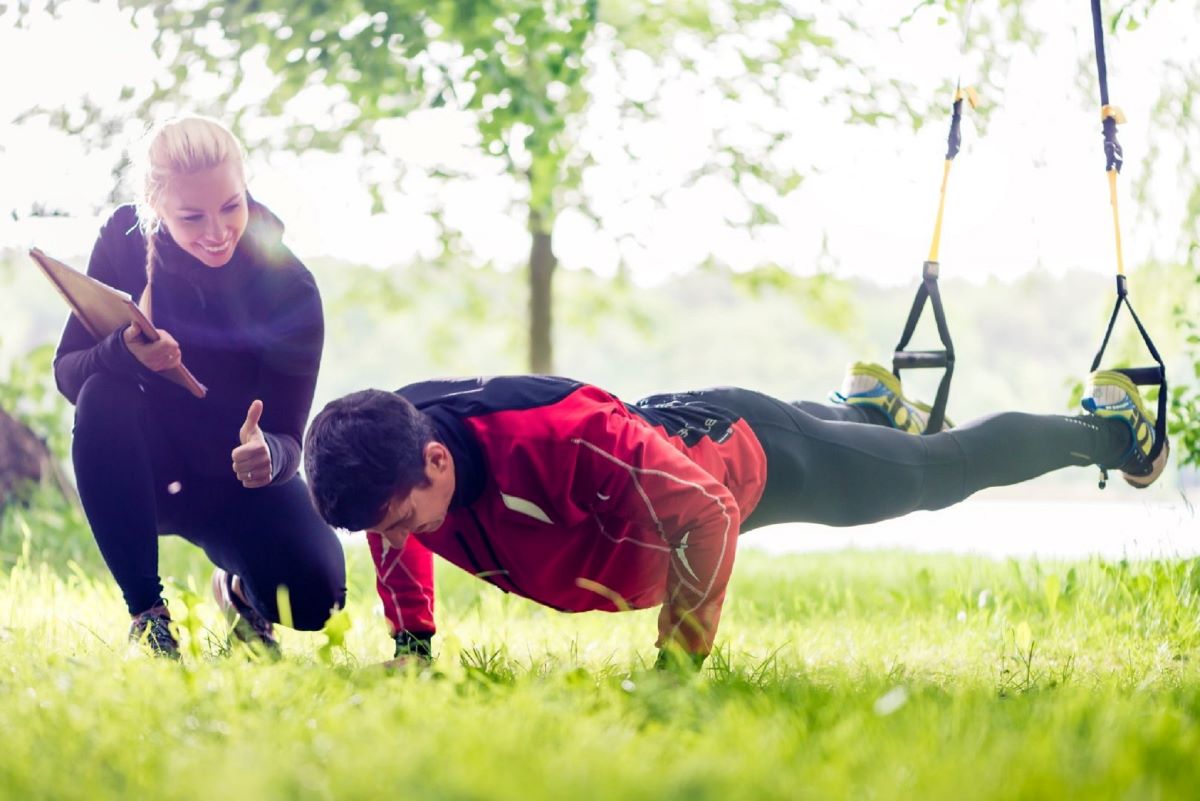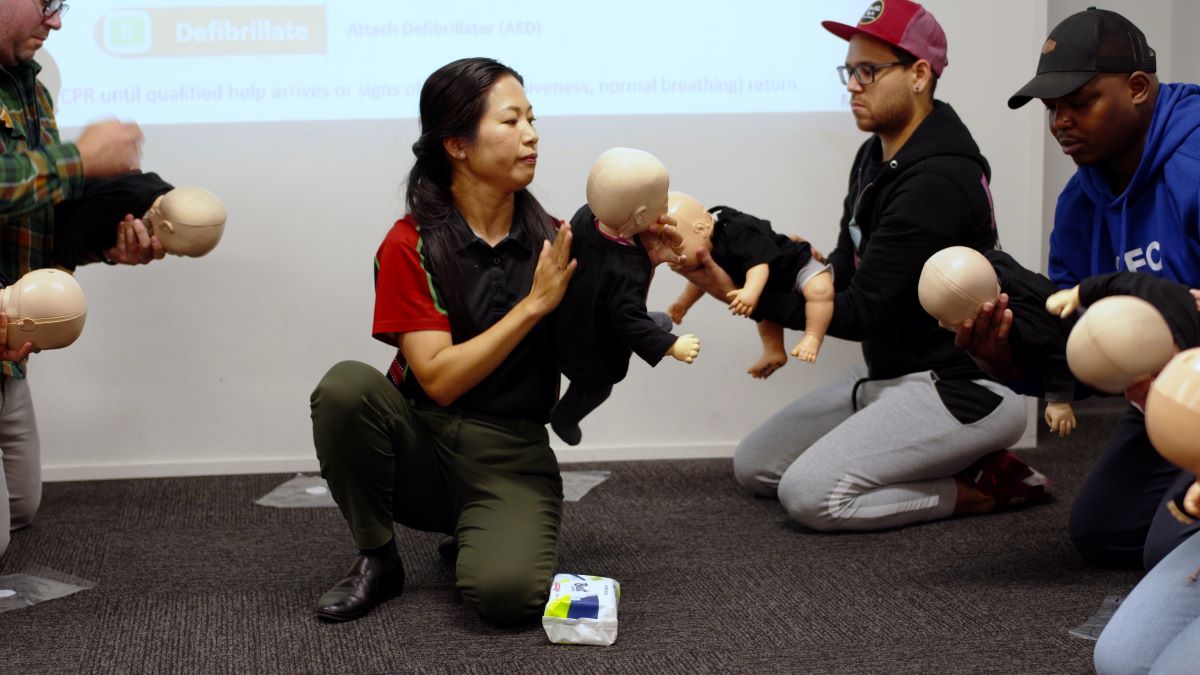While house fires mostly occur during holidays and wildfires in the summertime – the truth is, fires can happen any time. Make sure that you, your family, and coworkers know the basic fire safety procedures, the common causes of fires, and first aid treatment.
Fire Safety
Fire poses serious dangers to humans – burns, acute injuries, smoke inhalation, and even death. In severe cases, dealing with fire injuries should be transported to ER right away. Until then, would you know what to do?
Fire is a constant risk in every home, building, and workplace. If a fire starts in your area, you may only have a few minutes to escape and run for your life. Your ability to get out safely will depend on having working smoke alarms and efficient fire exits. But mostly, it will depend on your emergency response and preparedness.
Although not professional firefighters, everyone should at least have basic first aid knowledge on fire safety. Small fires can be put out with home fire extinguishers, and minor injuries can be treated at home.
Fire Safety Action Plan
A fire safety action plan is a comprehensive, written document that will highlight everyone’s role in the event of a fire. It includes your next actions, accessible fire exits, safe zone, and the arrangements when calling the fire service. All these will help in preventing the escalation of fires and increase your chances of survival.
If you discover a serious fire or are in a situation where a minor fire grows out of control, follow these steps:
- Raise the fire alarm. After sounding the alarm, everyone should know what to do and where to go without causing panic. Make sure that everyone in the building safely evacuates.
- Get straight out. Do not investigate the fire at that time and stop collecting your things. If no one is behind, close the doors behind as you go. Before opening a new door, touch it first using the back of your hand. If the door handle feels hot, it means that there is fire on the other side.
- Be careful with smoke inhalation. If a room is full of smoke, try to crawl to another area where the air is cleanest.
- Call the fire brigade. Give fire services your exact location and describe the nature of the emergency. Inform the dispatcher of the number of casualties or if there is anyone trapped inside.
- Do not go back in. If anyone is trapped, a trained firefighter can find them faster and safer than you can.
If any case escape route is blocked:
- Try climbing out of the window to see if there is anything safe you can land. Throw beddings and cushions to help break your fall and avoid injuries—lower the part of your arms from the window before dropping.
- Stop, drop, and roll. If there is no fire escape route available, try and gather everyone in one place. Close the door and seal it around the bottom using clothes or cushions to avoid smoke from getting in. Open a window and shout for help.
If you catch fire on your clothes, immediately stop, drop, and roll. Drop to the ground, and rolling will help smother the flames.
Get Trained
In addition to having a fire safety plan, it is also recommended to have fire prevention strategies and training. Every home and building should have multiple fire extinguishers and must know how to use them. Everyone must also be taught how to provide treatment for fire injuries.
At First Aid Pro Adelaide, we offer a provide first aid training course for individuals and groups. Learn more about fire safety prevention and treatment today.








